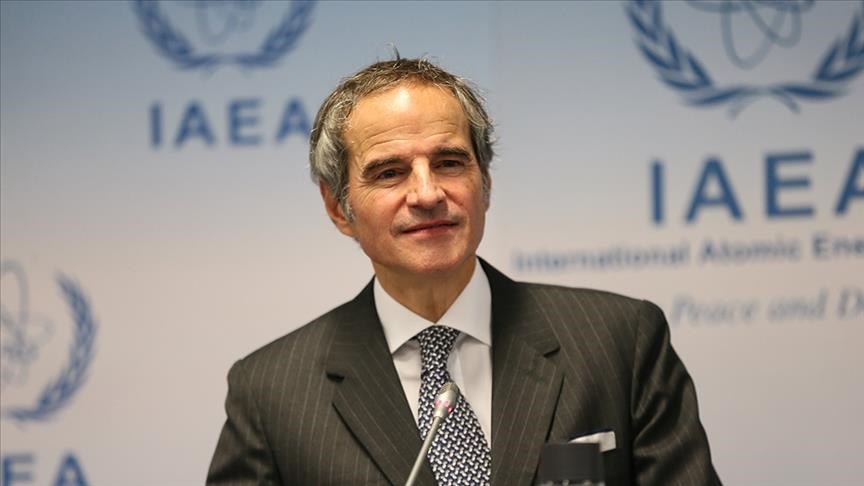UN nuclear watchdog chief stresses ‘full transparency’ in releasing wastewater from Fukushima
'Full transparency only antidote’ to misinformation about Daiichi Nuclear Power Plant wastewater discharge into Pacific Ocean, says Grossi

TOKYO
The chief of the UN nuclear watchdog during his visit to Japan has stressed the importance of "full transparency" in the discharge of radioactive wastewater from the Daiichi Nuclear Power Plant in Fukushima into the Pacific Ocean.
Speaking to the state-run NHK on Tuesday, Rafael Mariano Grossi noted that the International Atomic Energy Agency (IAEA) independently monitors the safety of wastewater, and reiterated that the discharge of radioactive wastewater into the Pacific Ocean which the Japanese government and the operating company started in August 2023, complies with international safety standards.
'Full transparency only antidote in this process’
Referring to the attitude toward countries, such as China, which oppose the release of wastewater or those that express their concerns about the situation, Grossi stressed that "dialogue that can dispel concerns" is underway and that he “receives the impression that these countries are gradually comprehending the situation."
Highlighting the "misinformation and confusion" about wastewater discharge, Grossi said "full transparency" is the only "antidote" in this process, and added that the IAEA will share scientific data with countries to "enhance understanding."
Cooperation with IAEA ‘until the last drop is discharged'
During his meeting with Japanese Chief Cabinet Secretary Hayashi Yoshimasa as part of his Tokyo trip, Grossi agreed to continue bilateral cooperation on the assessment of radioactive wastewater.
Yoshimasa, on his part, noted that they "deem it significant" that the IAEA oversees the discharge of wastewater, and that Japan “would like to continue working closely” with the international organization “until the last drop is discharged."
Grossi-led delegation is due to visit the Daiichi Power Plant in Fukushima this week to carry out on-site observations.
Phase 4 continues
According to the plant operator Tokyo Electric Power (TEPCO), the fourth phase of treated wastewater discharge began last month, while the first phase was completed on Aug. 24- Sept. 11, the second on Oct. 5-23, and the third on Nov. 2-20 last year.
Under the four-stage wastewater discharge process, a total of 31,200 tons of wastewater will be discharged from the nuclear power plant by the end of this month.
Wastewater discharge
TEPCO commenced the discharge of radioactive wastewater from the power plant in August 2023. Wastewater is discharged 1 kilometer (0.6 mile) off the coast through an undersea tunnel.
Radioactive substances formed in pure water, which serves to cool the reactors in the power plant, are decomposed, except for tritium material, through the Advanced Liquid Processing System.
In its final report in July 2023, the IAEA declared that Japan's wastewater discharge plan was compatible with safety standards.
Nuclear meltdowns caused by the magnitude 9 earthquake and subsequent tsunami in Japan in 2011 in the reactor at the power plant were released into the air and the area around the power plant was designated an evacuation zone.
* Writing by Serdar Dincel in Istanbul.
Anadolu Agency website contains only a portion of the news stories offered to subscribers in the AA News Broadcasting System (HAS), and in summarized form. Please contact us for subscription options.







